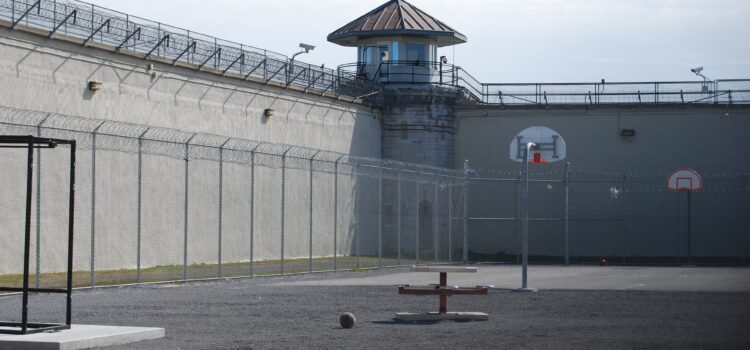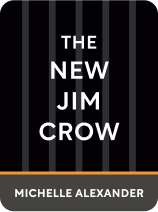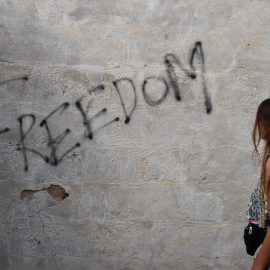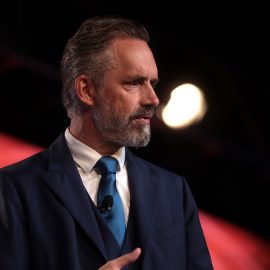

This article is an excerpt from the Shortform summary of "The New Jim Crow" by Michelle Alexander. Shortform has the world's best summaries of books you should be reading.
Like this article? Sign up for a free trial here .
What does The New Jim Crow book say about how to improve the flawed criminal justice system? Is it possible incrementally or does it require sweeping action?
The New Jim Crow book is authored by Michelle Alexander. It is about mass incarceration in the age of colorblindness.
Read more about The New Jim Crow book and its perspectives on addressing the issue of mass incarceration in the age of colorblindness.
The New Jim Crow Book and The Fire This Time
Alexander ends The New Jim Crow book with her perspective on why mass incarceration in the age of colorblindness cannot be dismantled piece by piece through litigation or narrow policies like affirmative action – people must recognize the enormity of the current system and overthrow it wholesale.
Barriers to Overturning the New Jim Crow
There are many forces entrenching the current system, and therefore just as many obstacles preventing it from being upended according to The New Jim Crow book.
Civil rights movements used to be about grassroots organizing and gathering critical mass of public opinion. However, of late, civil rights organizations became professionalized, heavily centered on lawyers and litigation, and distanced from the communities they were supposed to represent.
- Lawyers focus on problems that can be solved with litigation. But mass incarceration isn’t that problem, especially given the Supreme Court’s barriers on litigation in this area, described above.
- Plus, small policy changes, like lightening drug crime sentences, have little effect – it’s entering the system itself that is a huge disadvantage.
Advocates are loath to petition on behalf of criminals.
- Advocates have found that “respectable” people who defy racial stereotypes get the most success.
- In the civil rights movement, Rosa Parks wasn’t the first civil protester of segregation, but she was a model citizen, as opposed to the teenager who got pregnant.
- Perhaps it’s easier to draw attention to model citizens, such as for affirmative action.
Rigid financial incentives are in place to perpetuate the system.
- If prisons closed and the war in crime ended, over a million jobs would be in jeopardy (prison employees, police, workers in the legal system). Federal grants for drug enforcement would be revoked.
- Employers who use prison labor would be inconvenienced.
- Phone companies that charge families high rates to call in; gun manufacturers for police; stakeholders of builders of new prisons in white rural communities all have skin in the game.
Data seem to suggest the lowest crime rates in history.
- However, some suggest imprisonment creates far more crime than it prevents, and we could have even less crime today.
People are increasingly loath to talk about race and fearful of violating racial etiquette.
- People want colorblindness for different reasons. Conservatives believe in individualism and the idea that race is a private matter. Liberals believe in racial equality and the unloading of significance on race. Others prefer colorblindness because it seems that the only practical way to accept racial differences is to not see them.
- This has entrenched an insistence that systems are colorblind and just, and personal responsibility and morals are to blame for arrests. If we are colorblind, we ignore inherent real racial biases and racial divisions.
- Alexander argues people must recognize race and show care for others, fully cognizant of possible racial differences. Seeing race is not the problem; refusing to care for the people we see is the problem.
- Not coming to terms with race risks the same strategy as before – that race becomes a lever to pit racial groups against each other when it becomes politically convenient.
Affirmative action may be more of a racial bribe than a potent force.
- It provides cosmetic racial diversity while masking the new caste system.
- It has perpetuated the myth that anyone can make it if they try, and ignores deep disadvantages from birth.
- It distracts as the main battlefront in race issues.
Model black citizens deceptively signal that race no longer matters.
- “If black people can succeed, then surely discrimination does not exist, and thus people commit crimes out of free will!”
- (Shortform note: the same argument has probably applied to female CEOs and heads of state, when gender bias may still remain.)
- A few black CEOs and black graduates from Harvard seem like we’ve made a lot of progress, when the bulk data show blacks are no better off than 50 years ago.
- These examples are dissonant with the existence of a caste system – how can Obama be president when a caste is in place? Alexander urges to remember that even in slavery, free black men did exist and were the exceptions.
- It’s not that race no longer matters, it just matters a little less than it used to.
The exceptional black achievers are incentivized to fit into the system, rather than fight to change it, according to The New Jim Crow book.
- They give the appearance of racial equity without fundamentally altering the structures.
- Newcomers play by the old rules to survive. Minority police officers may engage in as much racial profiling as white officers.
Black people are loath to disagree and pull down black leaders.
- They’re hesitant to trigger the downfall of one of their own.
- Thus black leaders who uphold the racial caste may be given more latitude than white leaders.
So What to Do?
The New Jim Crow book recommends how to upend the system, but it requires inverting all the critical pieces holding the New Jim Crow in place:
- Most importantly, there must be public consensus that the way we approach drug crime produces a racial caste and must be dismantled. Indifference cannot reign.
- Similarly, Brown v. Board did not cause sweeping changes – it was public support 10 years later that caused the real changes in society.
- All financial incentives to arrest poor black people for drug offenses must be revoked. Those with jobs in jeopardy must be retrained.
- A seismic culture shift must happen in law enforcement – black people must no longer be viewed as the enemy. Data must be collected to prohibit selective enforcement.
- Public defender offices must be funded at the same level as prosecutor’s offices.
- Drug sentence laws and re-entry laws stripping away civil rights must be rescinded or dampened.
- Proper drug treatment and re-entry programs must be instituted.
- White people must be included in black movements to create an economic and class-based coalition based on all human rights. They should be given a stake in integration.
- This would require whites to give up their racial privilege.

———End of Preview———
Like what you just read? Read the rest of the world's best summary of Michelle Alexander's "The New Jim Crow" at Shortform .
Here's what you'll find in our full The New Jim Crow summary :
- How the US prison population increased 10x in 30 years because of harsh drug policies
- How being "tough on crime" was deeply motivated in discrimination against black people
- Why being convicted for a crime is essentially a life sentence of poverty and return to prison






